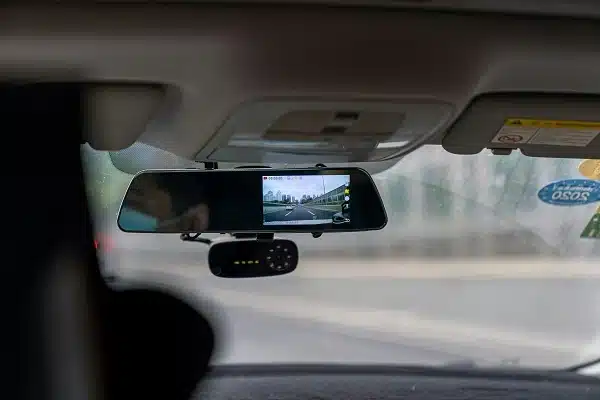Telematics has rapidly become a cornerstone of modern fleet management, enabling businesses to gain unparalleled visibility, efficiency, and control over their vehicles. From monitoring driver behavior to optimizing routes, telematics combines data analytics, advanced technology, and real-time tracking to transform how fleets operate.
1. What Is Telematics?
Telematics, at its core, is the integration of telecommunications and information technology to collect, transmit, and analyze data from vehicles. Often referred to as car telematics, it encompasses GPS tracking, vehicle diagnostics, and communication networks that allow fleet managers to monitor their operations remotely.
The definition of telematics extends beyond mere location tracking: it’s a framework for understanding how vehicles are used, how drivers behave, and how resources can be optimized. Modern telematics devices capture a wide range of metrics, from engine performance to fuel consumption, providing actionable insights that drive operational efficiency.
For businesses curious about safeguarding their assets, understanding how to protect their fleet from theft is one of the key benefits telematics brings to the table.
2. How Telematics Systems in Cars Operate
A car telematics system collects and transmits data through several components:
-
Sensors and On-Board Diagnostics (OBD) – These devices capture engine performance, fuel levels, and error codes. Fleet managers can delve deeper into maintenance insights through resources like our guide to understanding DTC codes.
-
GPS Modules – Provide real-time location tracking and navigation information.
-
Communication Networks – Cellular or satellite networks transmit data to centralized platforms.
-
Data Analytics Platforms – Telemetry data is processed through telematics analytics tools, offering dashboards and visual insights for better decision-making.
Together, these components form a telematics system in cars that enables real-time monitoring and predictive maintenance, ensuring vehicles operate safely and efficiently.
3. Key Applications of Telematics in Fleet Management
Fleet Vehicle Tracking
Modern fleet vehicle telematics allows managers to track every vehicle in their fleet in real time. Businesses can optimize routes, reduce idle time, and ensure timely deliveries. Products like SEEWORLD fleet GPS trackers integrate seamlessly into telematics platforms, offering live tracking and historical data analysis.
Driver Behavior Monitoring
Understanding driver habits is essential for both safety and profitability. Driver telematics captures speeding, harsh braking, and aggressive acceleration. Using these insights, managers can implement coaching programs and enforce safety policies, as outlined in our guide on how driver behavior affects safety and profitability.
Vehicle Diagnostics and Maintenance
Automatic telematics systems monitor engine health, fuel efficiency, and error codes. This allows fleet managers to schedule preventative maintenance, reduce downtime, and extend vehicle lifespan. Detailed insights can be further explored in resources like comprehensive guides on DTC codes.
Operational Reporting and Analytics
Telematics provides rich data for operational reporting. Managers can analyze fuel consumption, route efficiency, and driver performance through telematics data analytics platforms. For a deep dive into improving business operations using these insights, see how fleet reports can improve your business operations.
4. Benefits of Implementing Telematics
-
Enhanced Safety: Monitoring driver behavior reduces accidents and ensures regulatory compliance.
-
Operational Efficiency: Route optimization and resource allocation reduce costs and improve service delivery.
-
Cost Savings: Insights into fuel consumption, vehicle usage, and maintenance schedules drive measurable savings.
-
Asset Security: Real-time tracking helps prevent vehicle theft and misuse.
By integrating telematics solutions, businesses gain not only operational visibility but also strategic advantages in decision-making and planning.
5. Advanced Features of Modern Telematics
-
Video Telematics: Dashcams and integrated video provide visual context for incidents.
-
Artificial Intelligence Integration: AI-powered analytics predict maintenance needs, optimize routes, and enhance driver coaching.
-
EV Telematics: For electric vehicles, monitoring battery health, charging patterns, and route optimization is crucial.
-
Telematics Platforms: Sophisticated platforms combine GPS, diagnostics, and analytics in one seamless interface, enabling a fully connected fleet.
6. Industry-Specific Applications
-
Transportation & Logistics: Optimize delivery schedules, reduce fuel consumption, and enhance last-mile visibility.
-
Construction: Monitor heavy equipment usage, prevent theft, and track project progress.
-
Public Sector: Manage municipal fleets efficiently and ensure public safety vehicles operate reliably.
In every sector, vehicle telematics in the UK and globally are transforming how fleets operate by providing actionable insights and predictive intelligence.
7. The Future of Telematics
Telematics continues to evolve with emerging technologies:
-
5G Connectivity: Enables near-instant data transmission for real-time decisions.
-
Blockchain Security: Protects data integrity and automates processes with smart contracts.
-
Autonomous Vehicles: Integration with autonomous systems ensures safety, efficiency, and predictive analytics.
-
Mixed Telematics Live Tracking: Combines multiple telematics sources for enhanced fleet visibility.
These advancements signal a future where telematics projects are not just operational tools but strategic assets driving business growth.
Conclusion
Telematics is more than a technological upgrade; it is a transformative approach to managing fleets, improving safety, reducing costs, and enhancing operational efficiency. By leveraging car telematics systems, predictive analytics, and connected devices, businesses can harness the full potential of their fleets. Products like SEEWORLD’s fleet GPS trackers provide an integrated, easy-to-deploy solution that naturally fits into the telematics ecosystem, empowering managers with the insights they need to succeed.




